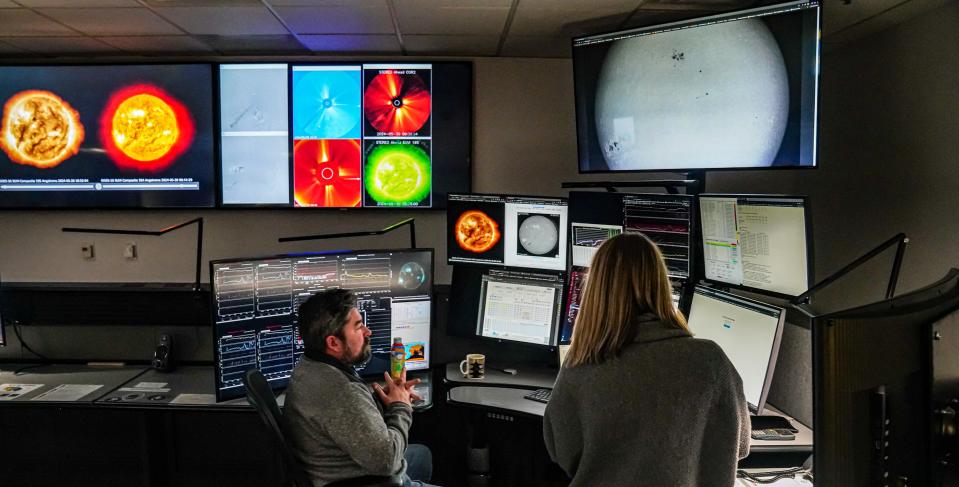Space weather forecasters are predicting that portions of the northern US could see the northern lights on Friday night into Saturday. This potential display is due to a cluster of sunspots that has rotated back in view of the Earth, setting up conditions for another spectacle. However, experts caution that it is still too early to confirm if the display will happen. The Space Weather Prediction Center in Boulder, Colorado is closely monitoring the situation and assessing the likelihood of an aurora event.
The northern lights could potentially be visible above parts of the northern US, including states like New York and Idaho, on the night of May 31 to June 1. A moderate geomagnetic storm is forecasted to hit the Earth on Friday and Saturday, which could trigger the aurora display. While this event is anticipated, there is uncertainty surrounding a bigger northern lights show next week. It will depend on whether the sun releases a solar flare and/or coronal mass ejection towards the Earth, which would induce geomagnetic storms and create the aurora.
Forecasters are closely monitoring satellite feeds and data at the Space Weather Prediction Center in Boulder to track any potential solar activity that could lead to an aurora. Shawn Dahl, a senior forecaster at the center, explained that predicting solar events from millions of miles away is challenging, and there are limitations to current scientific knowledge in this area. Despite these challenges, skywatchers are hopeful, especially with the upcoming new moon on June 6, which will provide optimal dark skies for viewing any aurora activity that may occur.
Eager skywatchers have their fingers crossed for another dazzling aurora display, following the spectacular nationwide event on May 10. Although the sunspot group responsible for that event has rotated back towards Earth, it remains uncertain whether it will emit another coronal mass ejection. Dahl emphasized that while forecasting solar events is a complex science, there is a level of predictability in assessing the probability of flares and radiation storms. However, the exact timing and occurrence of these solar phenomena remain uncertain and require monitoring in real-time.
Overall, the potential for a northern lights display in parts of the northern US on Friday night is generating excitement among space weather enthusiasts. Forecasters are keeping a close eye on solar activity and monitoring any developments that could lead to geomagnetic storms and auroras. The upcoming new moon on June 6 offers an ideal opportunity for skywatchers to witness a potentially vibrant aurora in the dark night sky. Despite the inherent unpredictability of solar events, there is optimism for another awe-inspiring display in the near future.








